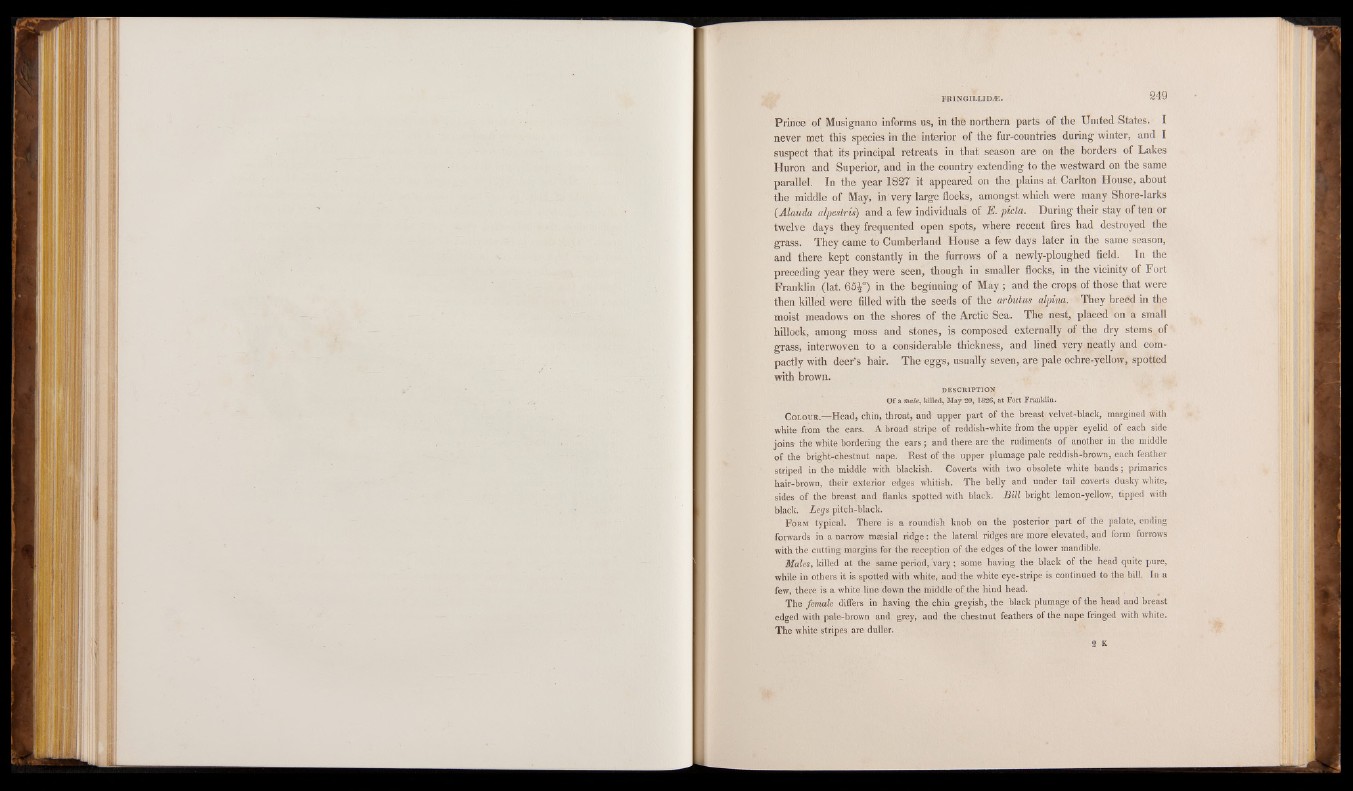
Prince of Musignano informs us, in the northern parts of the United States. I
never met this species in the interior of the fur-countries during winter, and I
suspect that its principal retreats in that season are on the borders of Lakes
Huron and Superior, and in the country extending to the westward on the same
parallel. In the year 1827 it appeared on the plains at Carlton House, about
the middle of May, in very large flocks, amongst which were many Shore-larks
(Alauda alpestris) and a few individuals of E . picta. During their stay of ten or
twelve days they frequented open spots, where recent fires had destroyed the
grass. They came to Cumberland House a few days later in the same season,
and there kept constantly in the furrows of a newly-ploughed field. In the
preceding year they were seen, though in smaller flocks, in the vicinity of Fort
Franklin (lat. 65J°) in the beginning of May ; and the crops of those that were
then killed were filled with the seeds of the arbutus alpina. They breed in the
moist meadows on the shores of the Arctic Sea. The nest, placed on a small
hillock, among moss and stones, is composed externally of the dry stems of
grass, interwoven to a considerable thickness, and lined very neatly and compactly
with deer’s hair. The eggs, usually seven, are pale ochre-yellow, spotted
with brown.
DESCRIPTION
Of a male, killed, May 20, 1826, at Fort Franklin.
Colour.—Head, chin, throat, and upper part of the breast velvet-black, margined with
white from the ears. A broad stripe of reddish-white from the upp’er eyelid of each side
joins the white bordering the ears; and there are the rudiments of another in the middle
of the bright-chestnut nape. Rest of the upper plumage pale reddish-brown, each feather
striped in the middle with blackish. Coverts with two obsolete white bands; primaries
hair-brown, their exterior edges whitish. The belly and under tail coverts dusky white,
sides of the breast and flanks spotted with black. Bill bright lemon-yellow, tipped with
black. Legs pitch-black.
Form typical. There is a roundish knob on the posterior part of the palate, ending
forwards in a narrow maesial ridge: the lateral ridges are more elevated, and form furrows
with the cutting margins for the reception of the edges of the lower mandible.
Males, killed at the same period, vary; some having the black of the head quite pure,
while in others it is spotted with white, and the white eye-stripe is continued to the bill. In a
few, there is a white line down the middle of the hind head.
The female differs in having the chin greyish, the black plumage of the head and breast
edged with pale-brown and grey, and the chestnut feathers of the nape fringed with white.
The white stripes are duller.